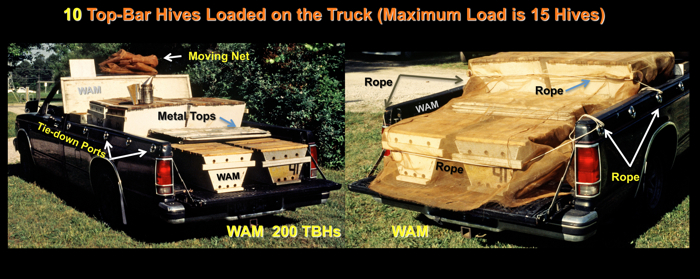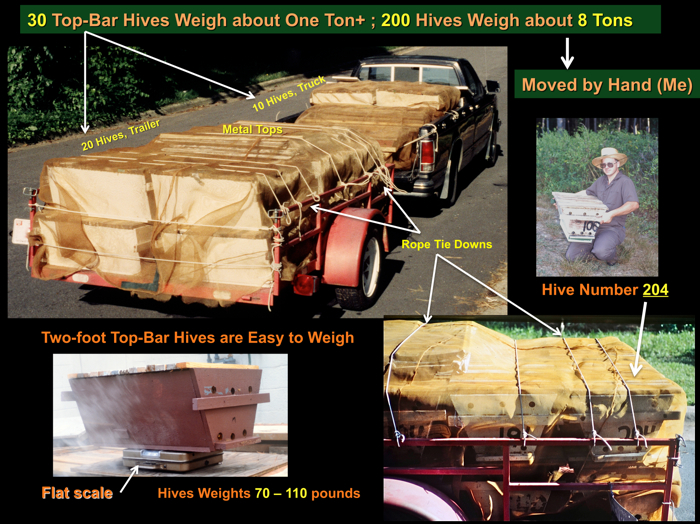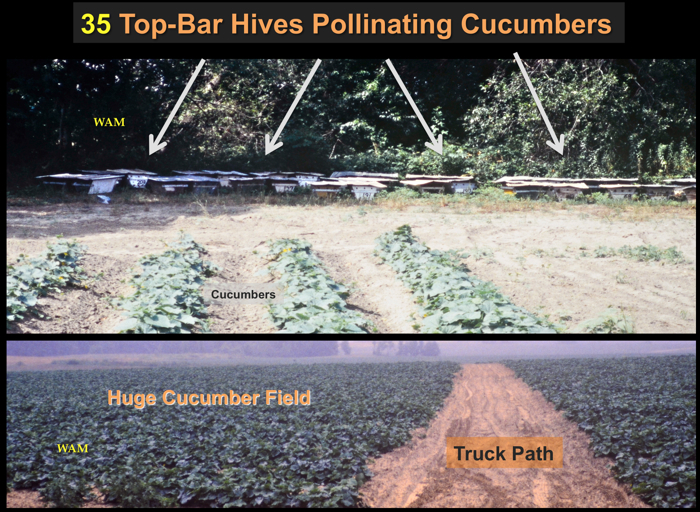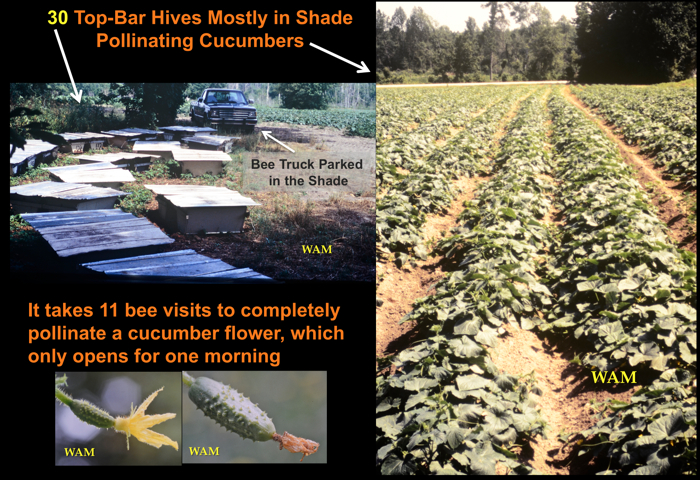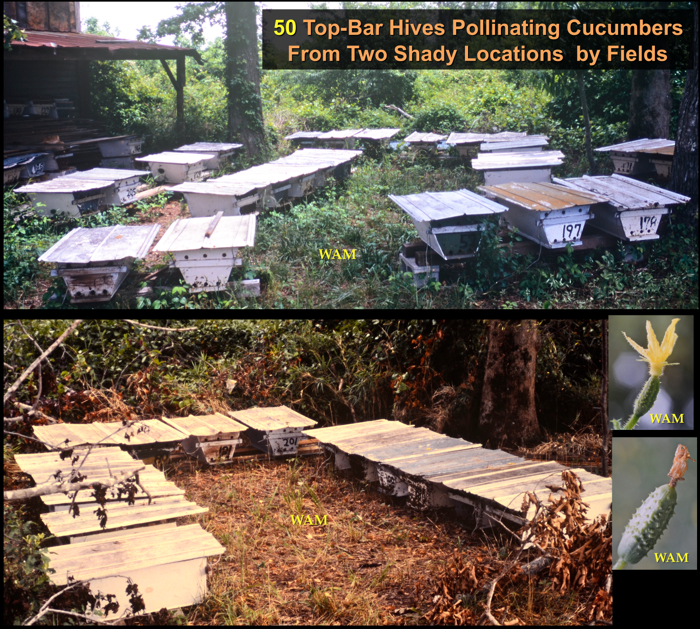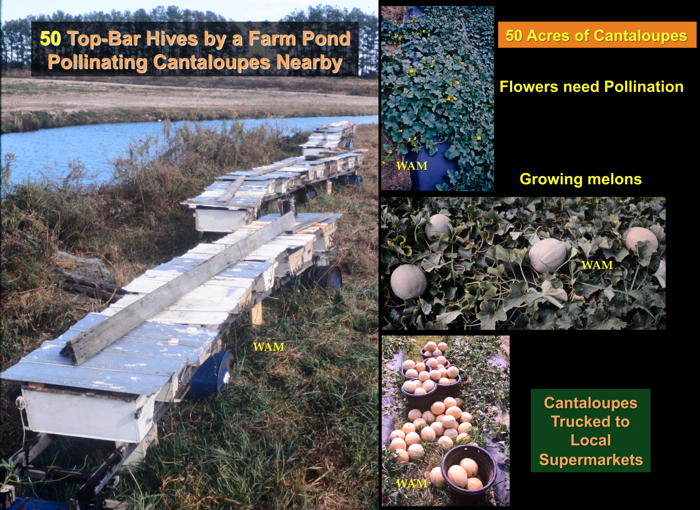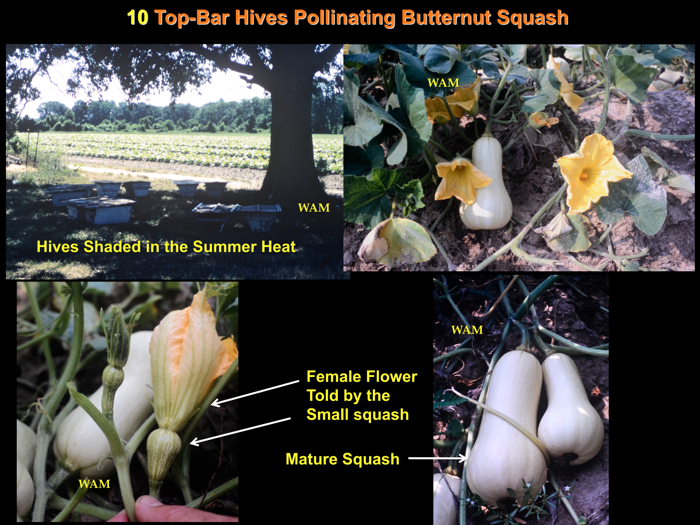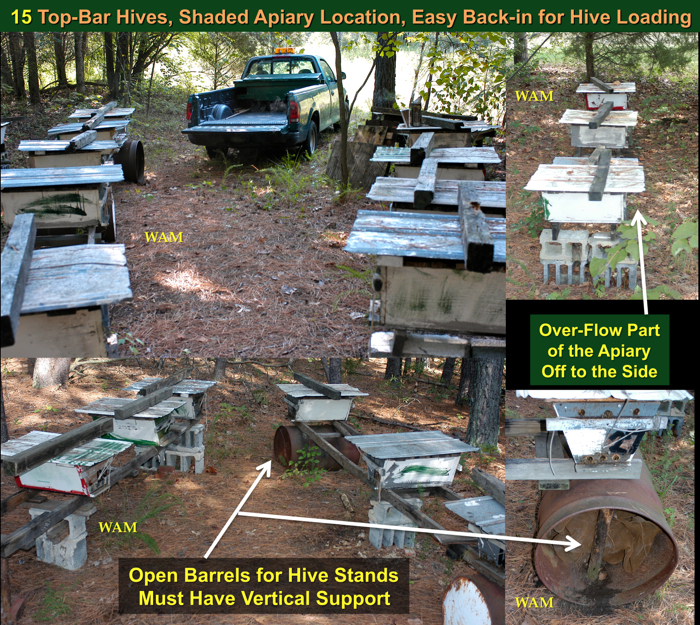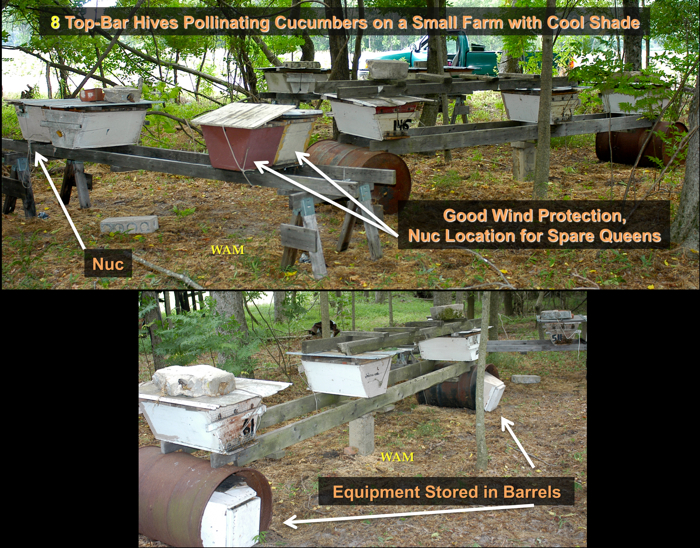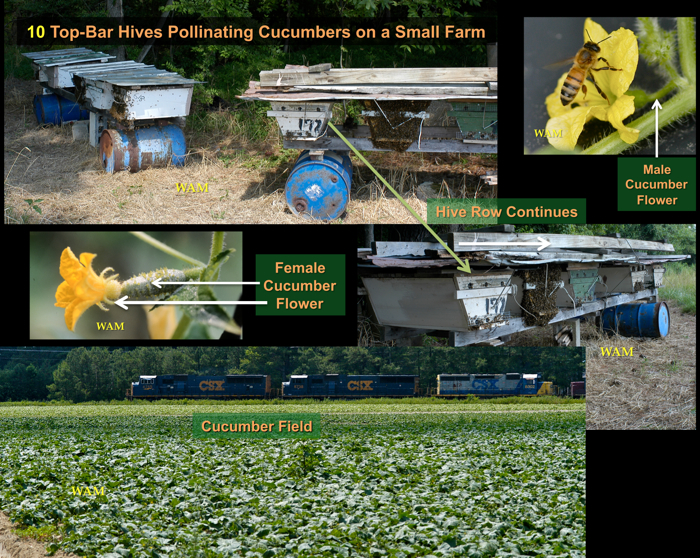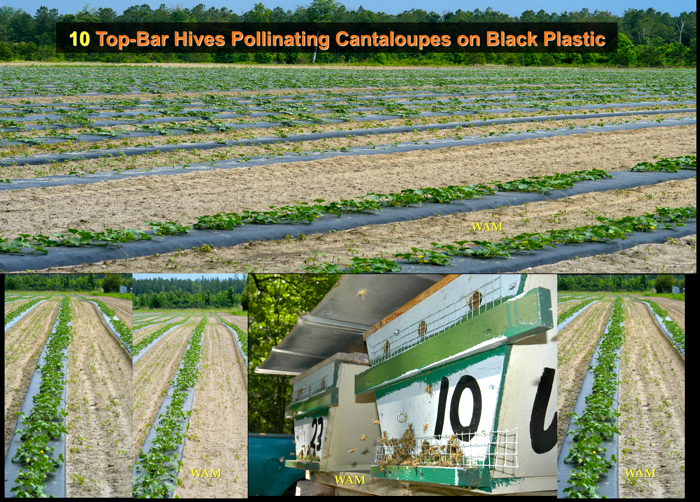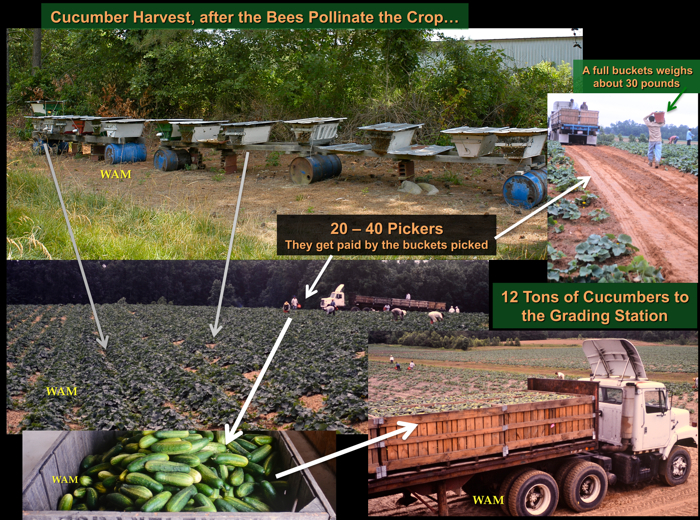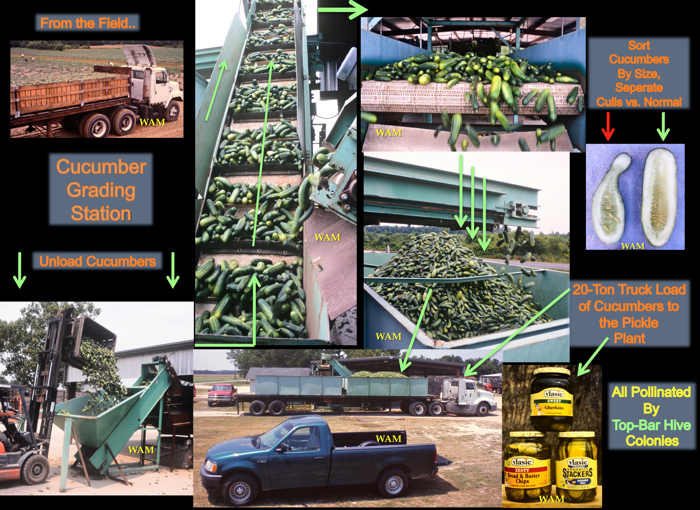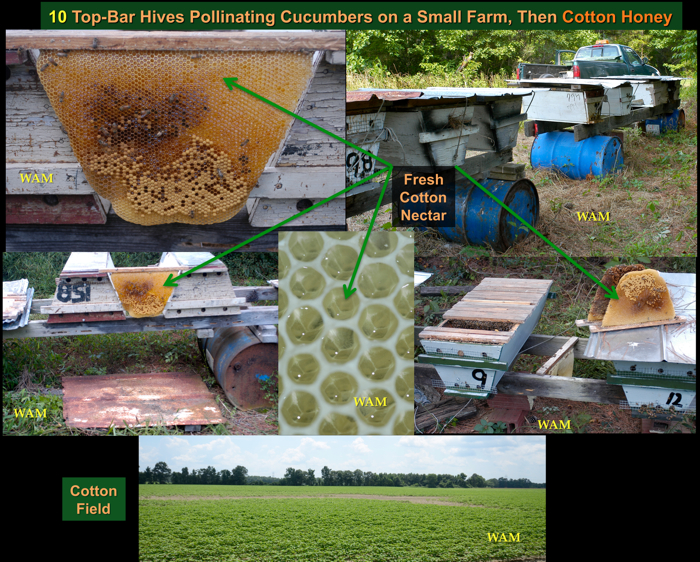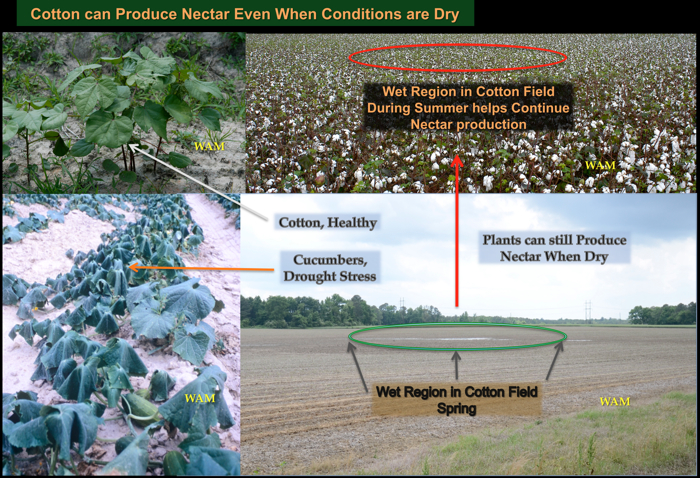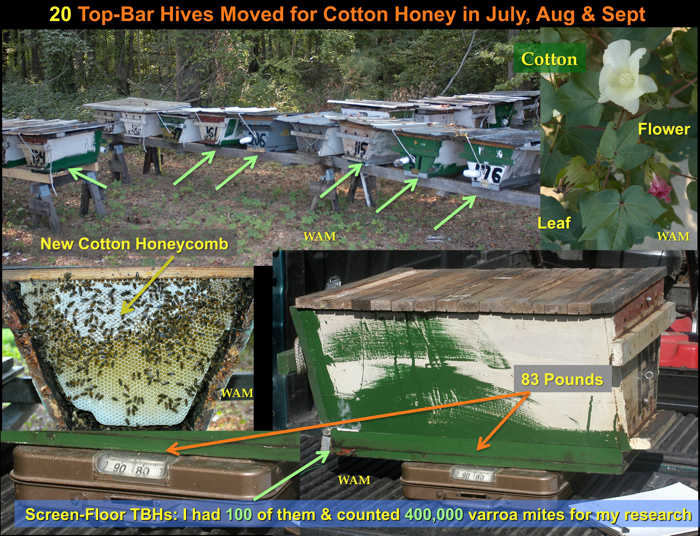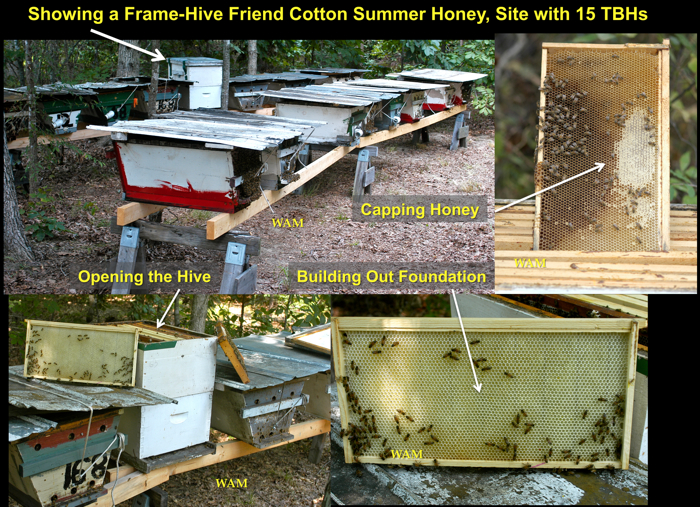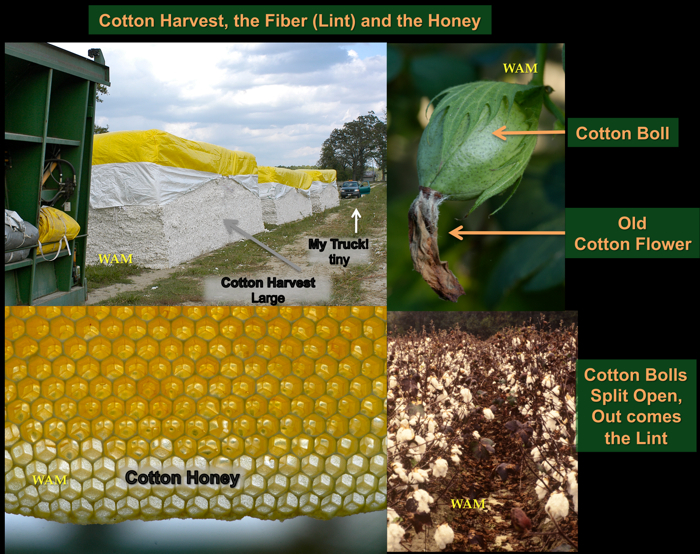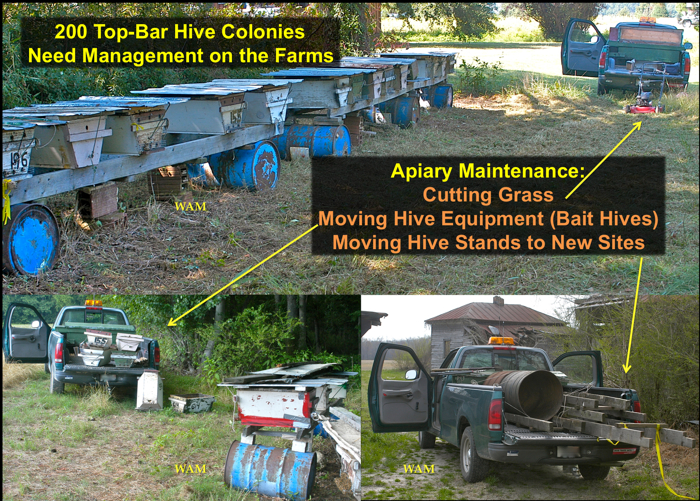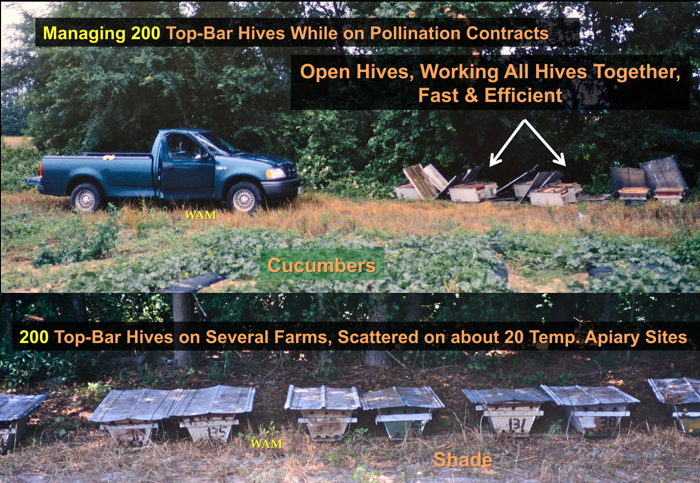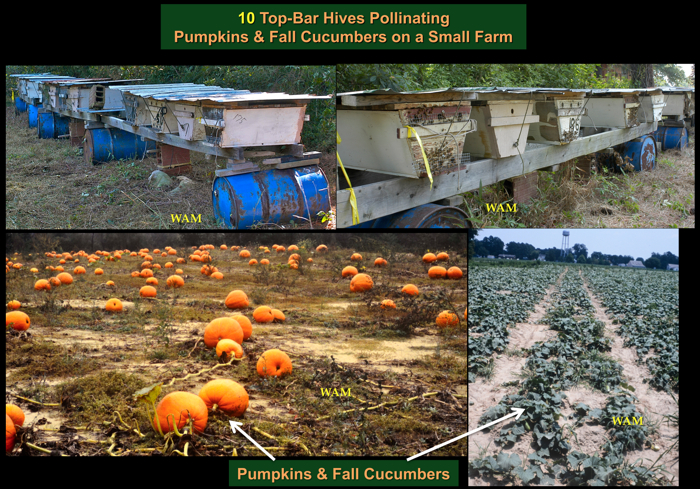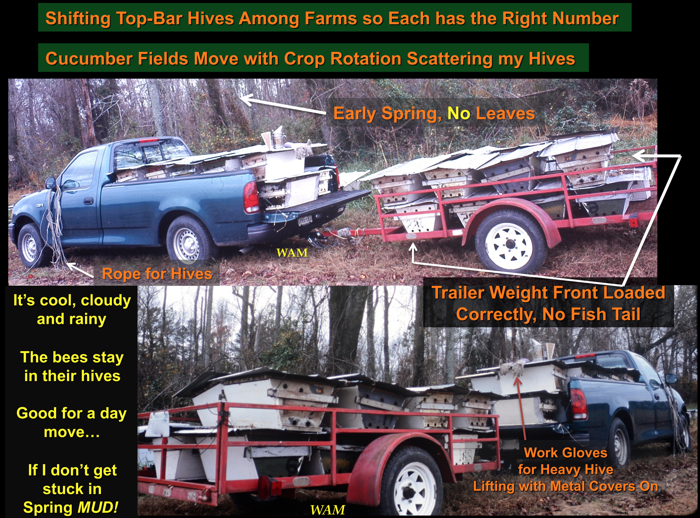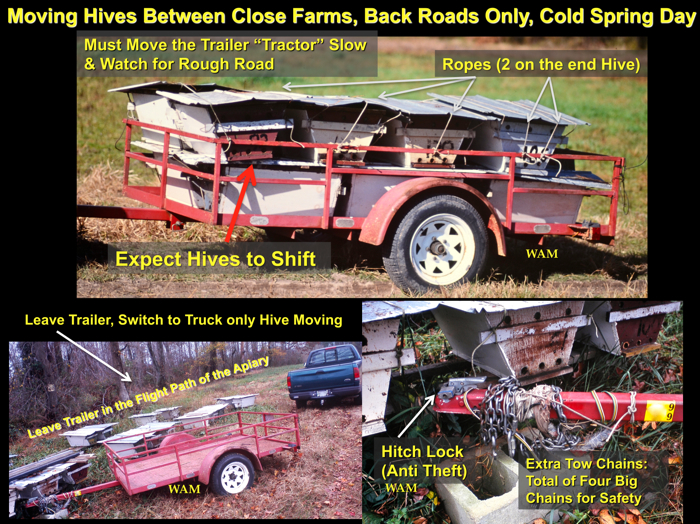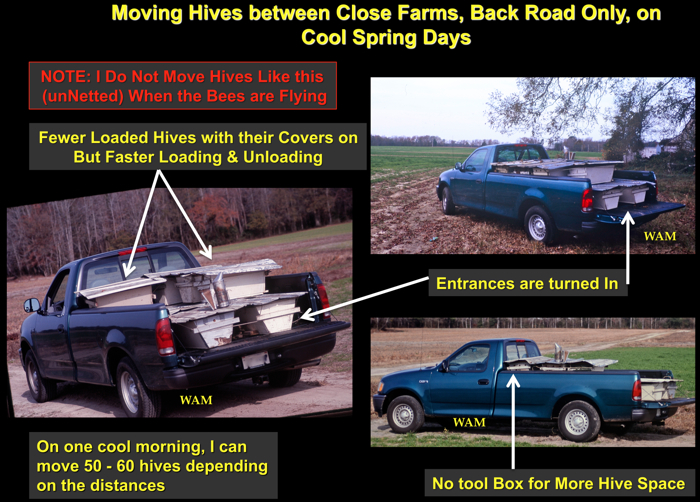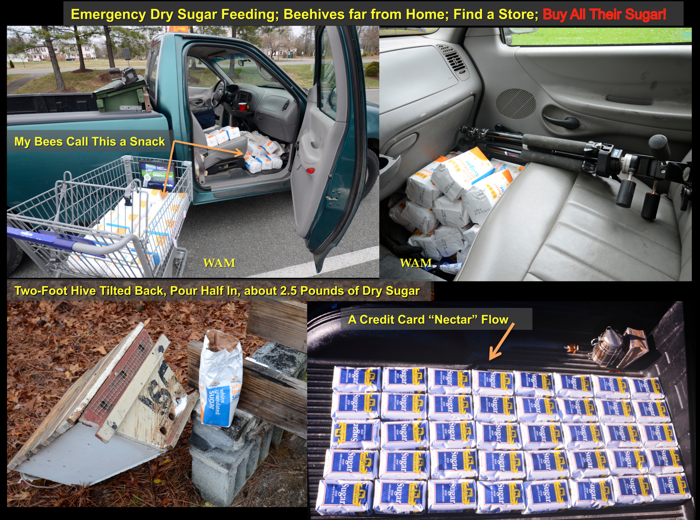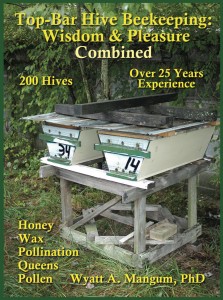Eight Tons of TBHs
Moving Eight Tons of Top Bar Hives for Pollination
This page is a pictorial documentation of how I moved 200 top bar hives for crop pollination annually. The chapter in my top bar hive book gives numerous technical details for conducting crop pollination. This page has more graphic freedom, more like a graphic novel with an intent to educate about the hard work of crops pollinated, which is extremely valuable.
Pollination amounts to $15 billion worth of value to US agriculture while US honey production is worth about $200 million. A third of your diet is dependent on insect pollination and most of that would be from bees. (S.E. McGregor, an agricultural scientist first estimated that figure in 1976; others have since calculated nearly the same.)
Beware, though, moving eight tons of top bar hives is not for the meek and maybe not for – the sane.
At the crack of dawn…
… from my home apiaries, I hand load my truck and trailer with two-foot long top bar hives.
A one-ton load of 30 hives.
Nets cover everything for the hour and a half drive east to the cucumber fields.
Racing the rising sun, I unload the hives before the coming heat of the day.
I try to keep the hives in the shade and out of the way of farm crews and their heavy equipment.
The work can be brutally hard. In the lower picture, the vegetation around the hives looks brown. That is because I hacked out a place in the dense vines and briars with my heavy-duty sling blade (the one I described in my top-bar hive book). For years if I needed shade for my bees on a farm, I hacked it out of the woods with my sling blade in the heat. That is called Spartan beekeeping. (I never used a weed eater, too messy.)
In full sun is the only place for the hives on the farm, shown below, growing cantaloupes by the tractor-trailer load. The metal shields of my top bar hives are phalanxed together for mutual heat protection as told in my top bar hive book, the ancient Greek way, now against the sun.
My top bar colonies pollinate other crops in smaller fields like butternut squash. I set the hives under the tree so the afternoon shade would cover my hives, right in the heat of the day.
Since I work alone and pick up and carry the hives for loading and unloading, I lay out my home apiaries for efficiency. Here I back in and load the hives quickly in the shade for a second load of the day, popping out in the sunlight and moving quickly to fields not far away. I leave catch hives here so returning foragers will have places to go.
Several apiaries on the farms remain year round. There I accumulate spare queens for the other pollination hives, coming in, when they occasionally need a queen.
Some farms have about 250 acres of cucumber down to 20 acres on smaller farms like below.
Some farms use black plastic for weed control. Water lines run under the plastic delivering water and the correct fertilizers.
I leave my top bar hives on the farms after the cucumber bloom is over, waiting for the honey coming from cotton. In the meantime I watch the cucumber harvest, all the hard laborers, picking that crop. They get paid by the bucket, which weighs about 30 pounds full. When the picker hands up a full bucket to dump into the truck bins, the person on the truck puts a ticket in the empty bucket when handed back down. That is how a picker gets credit for the amount he or she picks. In the lower right picture, 12 tons of cucumbers leave for the grading station.
Arriving at the grading station, the freshly picked cucumbers are quickly unloaded, sorted by size, and sent off to fresh markets or to the pickling plants. All pollinated by bees in top bar hives.
Here comes the cotton honey. I could move my bees back west where they would lose honey weight for the rest of the summer. A’better plan is to leave them alone. Cotton blooms in early July and continues almost until September. Cotton honey has a bland taste, crystallizes fairly quickly, and is not really a table grade honey. No bother, I want cotton honey for my bees. Early in the season, I learn where the cotton fields will be for that crop rotation, when the plants are just a few inches high. Oh yes, I learned the biology of cotton.
Bees can still find wet places out in a dry cotton field, appearing mostly so from the edges. The bees fly out there and find the flowers still bearing nectar.
Below are some of my research top-bar colonies with screen floors for varroa counting. I have moved them near a cotton field especially to build up on that nectar flow. I had 100 screen-floor top-bar hives and counted 400,000 varroa mites from them with a hand counter, right in the apiaries. It was an excellent way to understand varroa mite population growth, but hard on the eyes.
Below I moved a frame hive from a neighboring beekeeper along with my top bar hives. Most beekeepers in my area have never experienced a long summer nectar flow, like from cotton.
Those huge blocks of cotton lint, larger than my truck, are part of the cotton harvest, what you could be wearing some day.
Leaving 200 hives scattered on farms and their rented lands means a bee management hardship for me in for the summer while they build up on the cotton flow. The colonies have to stay strong, covering and protecting their combs. I keep the grass cut back sometimes with a mower, usually my sling blade, which works better in tight places around the hives.
I inspect several hives at once and swap around combs to even things out if needed. Varroa and small hive beetles have greatly complicated bee management.
As the season begins to close, I rent some top bar hives for fall cucumbers, a second crop with the hives already on the farms. Other hives I rent for pumpkin pollination.
In later years, I let about 80 hives stay on some farms year round, cutting down on my hauling. In early spring, when I know from the growers where the crop rotations placed the cucumbers, I start to reposition my hives, way in advance of the crunch-time bee moves coming later. These are short farm-to-farm moves on the back roads.
Early in the spring, the hives are mostly lightweight.
Sometimes I use just the truck, which gives the bees a smoother ride. If the loaded trailer is too light, the hives will bounce, not good for the bees or the combs.
If I pick up hives and they are too light, that means starvation could be near. Away at an out-apiary, I am too far from the house to return and waste time with sugar syrup. Rather, I hunt down the nearest grocery store, even a little country one, and in dire times buy all their sugar. A credit card “Nectar Flow.” I feed the sugar dry as shown below. On several occasions I have saved entire apiaries, some 50 hives at a time, from starvation, until spring foraging picked up or I could return with more feed.
Once the spring gets going, the season starts over again. I will add more pollination pictures as I get them. For more information on pollination with top-bar hives, or basic information on them, see my book: click here or on my book cover below.

